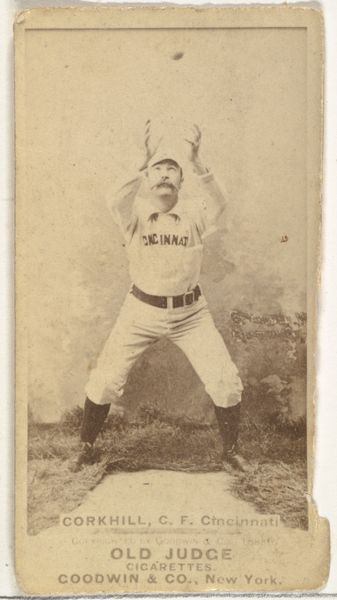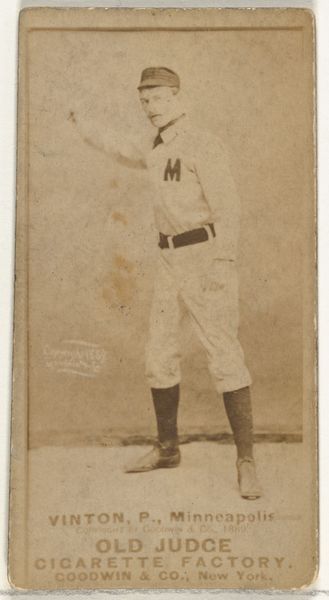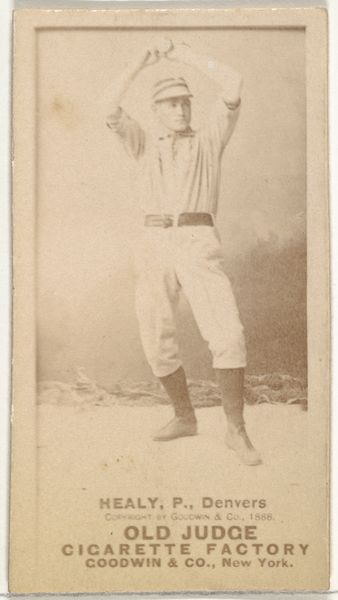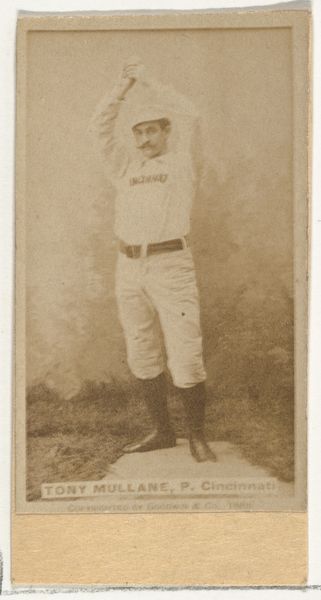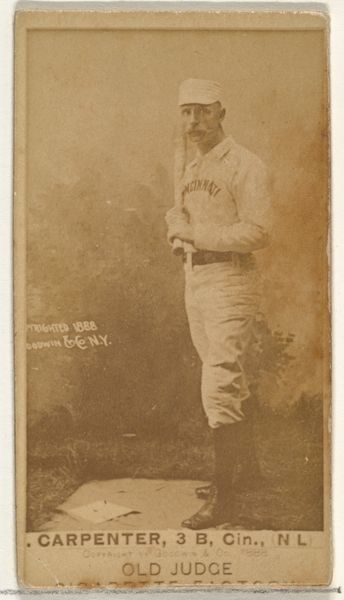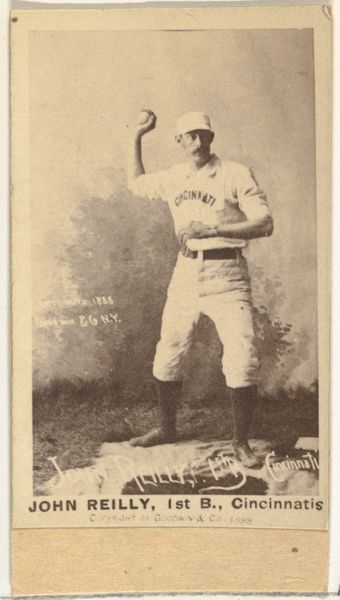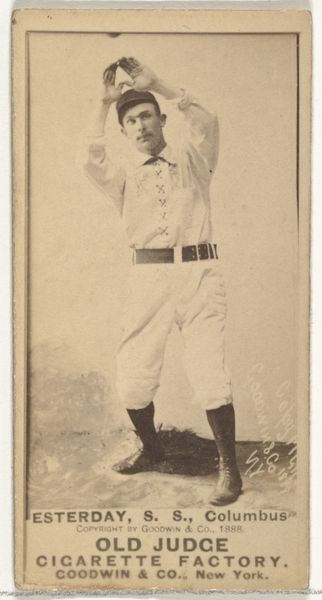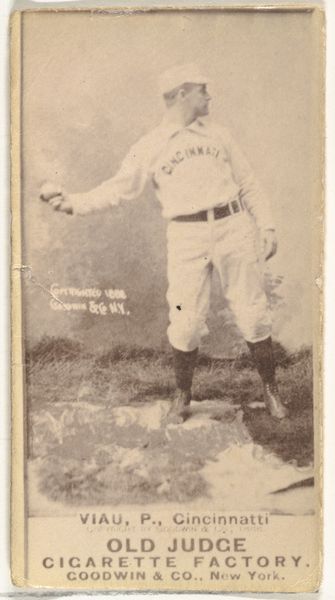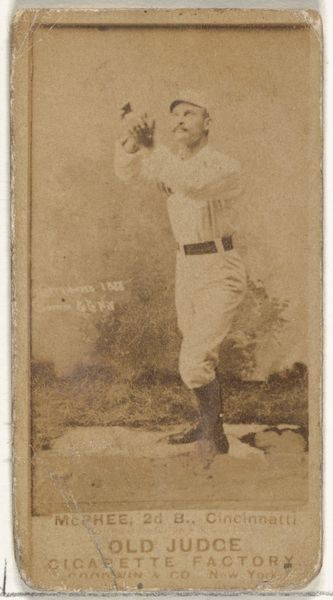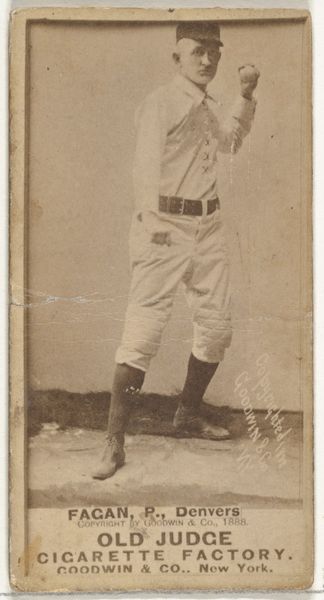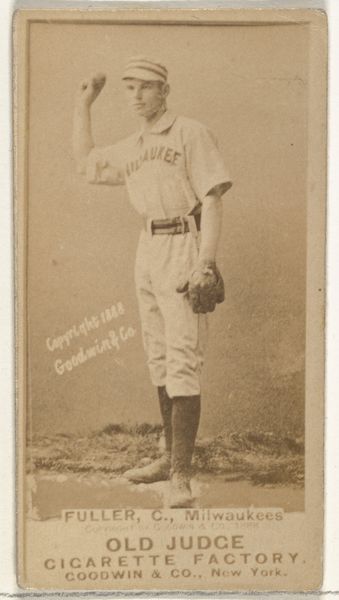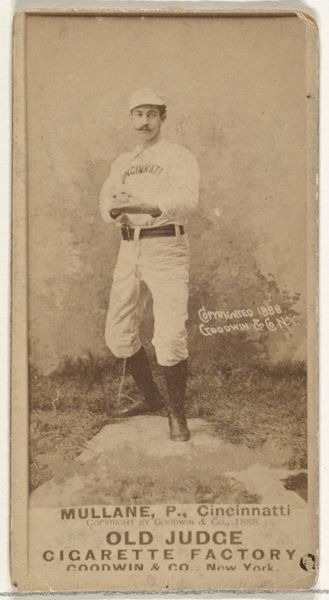
James William "Jim" Keenan, Catcher, Cincinnati, from the Old Judge series (N172) for Old Judge Cigarettes 1887 - 1890
0:00
0:00
print, photography
#
portrait
# print
#
baseball
#
photography
#
men
Dimensions: sheet: 2 11/16 x 1 3/8 in. (6.9 x 3.5 cm)
Copyright: Public Domain
Curator: Hello and welcome. We are standing before "James William 'Jim' Keenan, Catcher, Cincinnati," a photographic print, produced between 1887 and 1890 as part of the Old Judge series for Old Judge Cigarettes. Editor: There's a kind of melancholy to it, isn’t there? The sepia tones give it this washed-out, dreamy feeling, and his stance seems oddly formal, yet open somehow. He holds the baseball in his hands as if offering it. Curator: Exactly! Goodwin & Company understood the burgeoning baseball craze, and used photography, printing techniques, and distribution – placing these cards in cigarette packs – to fuel consumerism, targeting a largely male demographic. The photograph itself highlights the production involved: posing, printing, and distribution as parts of material history. Editor: It is a portrait, and they were produced serially, destined to be disposable ephemera, these little portraits became coveted. Did people realize they were collecting labor and capital itself? I find the materiality fascinating. What were these portraits made of, and at what costs? Curator: Absolutely. The materiality is important, thinking about the chemical processes involved in early photography, and the labor in mass production that created them in a way that’s simultaneously functional and iconic. And he is very stylish. Look at that stache, a look. Editor: Oh, he’s got some formidable whiskers. It gives him a slightly old-fashioned air, even for the time, it also shows the power of printed image. You have the player on one side of the cigarette carton and its printed image on the other, mirroring production and reproduction in the late 19th century. Curator: And he is really the representation of American values in its pure, if slightly grubby, form: part and parcel with enjoying the pleasures (and dangers) of turn-of-the-century life. Editor: So it ends up being an intriguing artifact where art, commercial interests, baseball fandom, and industrial-scale manufacture all collided. It reminds us that even the simplest images have complex origins, bound up with materials, processes, and economic forces.
Comments
No comments
Be the first to comment and join the conversation on the ultimate creative platform.
